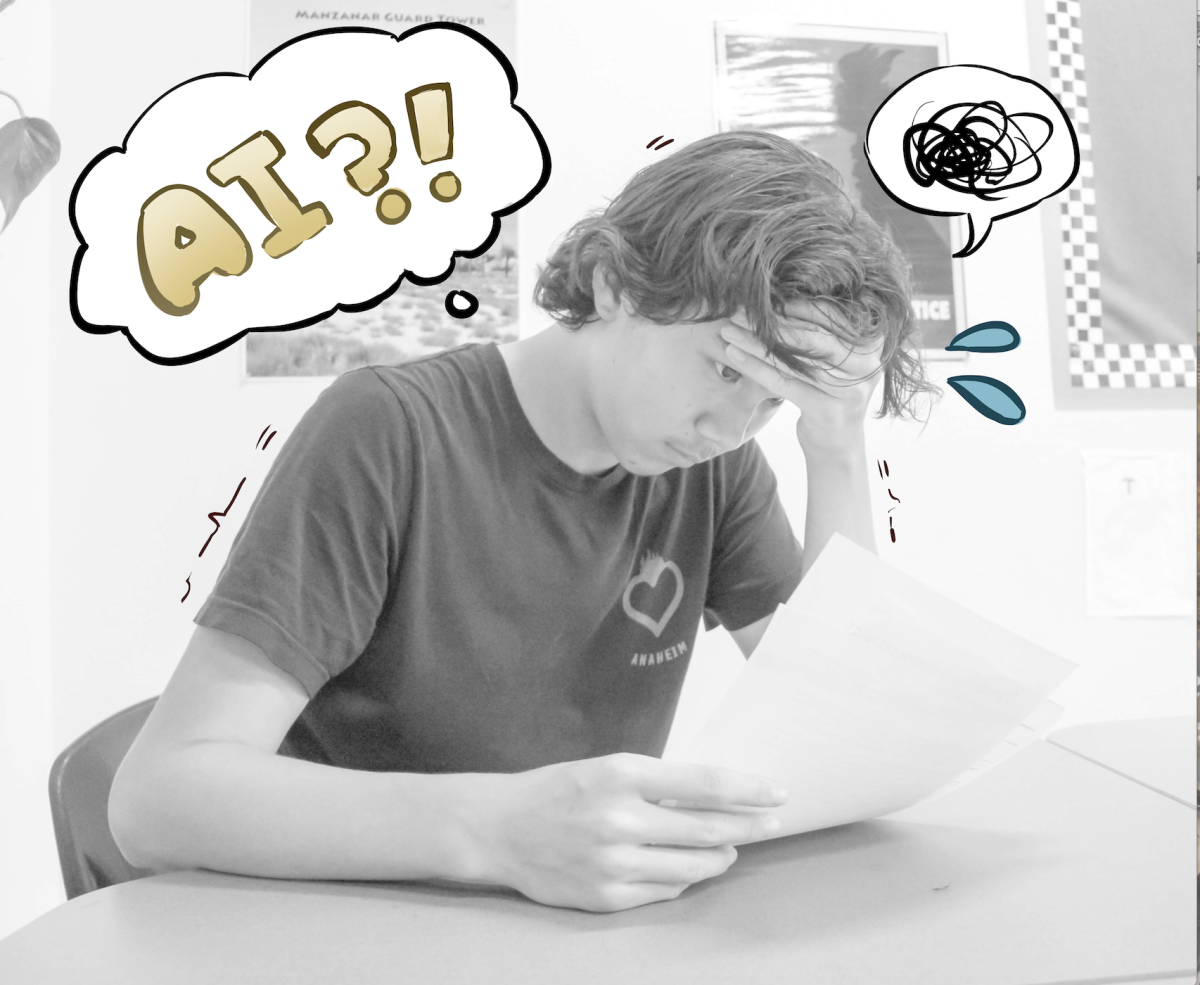The rapid integration of artificial intelligence in education has prompted software such as Turnitin to launch AI detection tools in response to growing concerns about cheating, plagiarism and reduced development of critical thinking and problem-solving skills. However, these tools are not absolute proof of AI use, so students do not need to worry about false positives.
Unlike plagiarism checkers, which identify sentences, paragraphs or phrases that are identical or similar to existing content, AI detection tools predict patterns based on how words are arranged and used in comparison to their training data. For example, assignments that are detected as 20% AI-generated means there is a 20% chance that the content was written with AI, not that 20% of the content itself was AI-generated.
“If the AI detection tool tells you it’s 20% AI-generated or less, it’s probably a false positive,” English teacher Charles Gates said. “I don’t feel comfortable enough with this technology to make assumptions about what students have done.”
There have been numerous cases where students have used AI software to cheat on assignments simply because of its easy accessibility. In July, a survey conducted by the research firm Big Village found that roughly 44% of teens are likely to use AI to do their schoolwork for them.
However, while using AI when writing generally leads to more predictable and less unique content, improvements in AI have made detection more challenging.
“I don’t use AI for my assignments, so I would definitely be worried if my work was wrongfully flagged for AI,” sophomore Anh Vo said.
Some students worry about unreliable AI detection because of the potentially disastrous consequences they could face if falsely flagged. In addition to causing unjust punishments, false accusations could also strain student-teacher relationships, resulting in disengagement in class activities.
“When anyone is caught plagiarizing or using AI, it can damage the student-teacher relationship at first,” English teacher Angela Allen said. “But once the student goes through the process of redoing the assignment that they were caught for, and if the student truly understands the gravity of what they had done, then the relationship will move forward.”
Regardless of whether a student is caught or falsely accused of AI use, open communication between the student and their teacher is necessary to maintain trust.
“Turnitin has only been detecting AI for a couple of months, so because all it does is give me a percentage, I try to figure out what’s happening before my students get a cheating record,” Gates said. “The detection is still in a primitive stage.”
As AI detection teams continue to work on minimizing false positives, educators can focus on developing policies around AI use such as citing AI when appropriate and standardizing their responses when students are suspected of cheating. Students should also be prepared in case they are falsely flagged.
“Students should be working on a Google Doc that is present before they turn the assignment in,” Allen said. “They should be able to go through the version history as proof that it was actually their work.”




















































